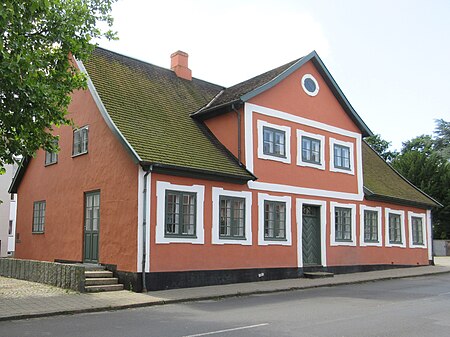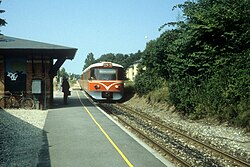Stud Master's House
1720s establishments in DenmarkHillerødHouses completed in 1723Houses in Hillerød MunicipalityListed buildings and structures in Hillerød Municipality

The Stud Master's House (Danish: Stutmesterens Hus), situated on Frederiksværksgade, west of Frederiksborg Castle, was built for the stable master at the Royal Frederiksborg Stud in Hillerød, Denmark. It was built in 1723 to a design by Royal Building Inspector Johan Cornelius Krieger and is fairly similar to nearby Batzke's House which was also designed by Krieger. The house was in the first half of the 19th century for a while used as a school under the name Nyhuse Skole. It was listed in the Danish registry of protected buildings and places in 1919.
Excerpt from the Wikipedia article Stud Master's House (License: CC BY-SA 3.0, Authors, Images).Stud Master's House
Frederiksværksgade, Hillerød Municipality
Geographical coordinates (GPS) Address Nearby Places Show on map
Geographical coordinates (GPS)
| Latitude | Longitude |
|---|---|
| N 55.93615 ° | E 12.291 ° |
Address
Frederiksværksgade 39B
3400 Hillerød Municipality
Capital Region of Denmark, Denmark
Open on Google Maps








